Jenkins For Beginners
Jenkins Setup and Interface
Jenkins User Interface Overview
In this lesson, we explore the Jenkins user interface, highlighting its key features and configuration options. This guide will help you navigate through the interface, understand system settings, and manage Jenkins effectively.
After installing Jenkins, you are directed to the login page. Before logging in, it is useful to review system information such as the installed Jenkins version. Click on the Jenkins icon located at the bottom right of the page to reveal details like the current version and other relevant metadata. For example, you might see:
- Current version: 2.46.2
- A list of mavenized dependencies packaged with Jenkins, including static resources like themes, icons, author details, and license information.
- Hyperlinks for additional details about licenses and plugin dependencies.

Once you log in as an administrator (default username "admin"), you are presented with the Jenkins login page.
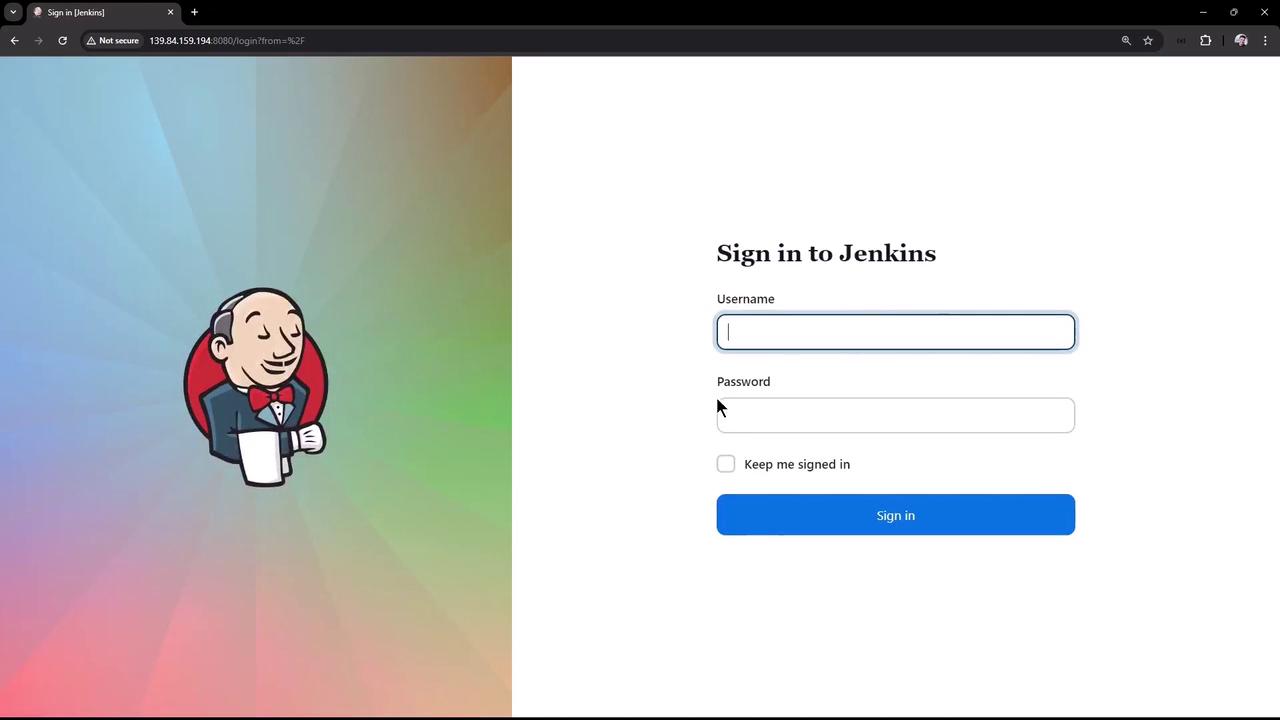
After successful authentication, the dashboard is displayed, granting you full administrative access. The dashboard’s top section features notifications, including important security warnings. One such warning recommends avoiding the use of the built-in node for both building and managing Jenkins; setting up distributed builds is advised for enhanced security.

Dashboard Overview
The "Manage Jenkins" section offers a wide range of configuration and management options, including system settings, security configurations, status information, and troubleshooting tools. Additional options may be available depending on the installed plugins.
System Configuration and Settings
Within the system configuration, you can view and modify key settings of your Jenkins instance. For instance:
- System Message: Modify it to display announcements or notifications. In our example, the message was updated to "Welcome to Dasher Team CI organization."
- Executors and Node Labels: Check the number of executors and labels used for job execution.
- Jenkins URL: Set during installation, this URL is crucial for correctly referencing Jenkins within images and email links.
- Help Icon: Click the question mark icon next to any configuration option to get detailed explanations.
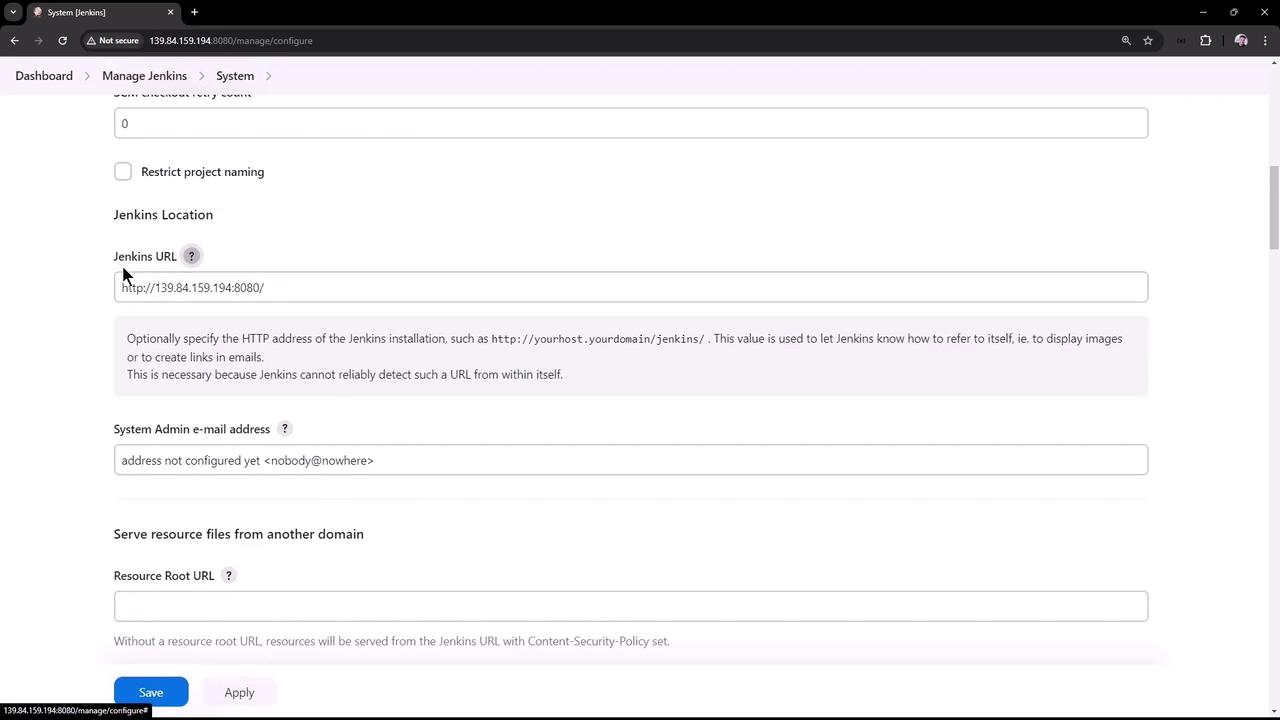
After modifying configurations, you have two options:
- Apply: Save changes without leaving the page.
- Save: Commit changes and be redirected to the home page, where the updated system message is displayed.
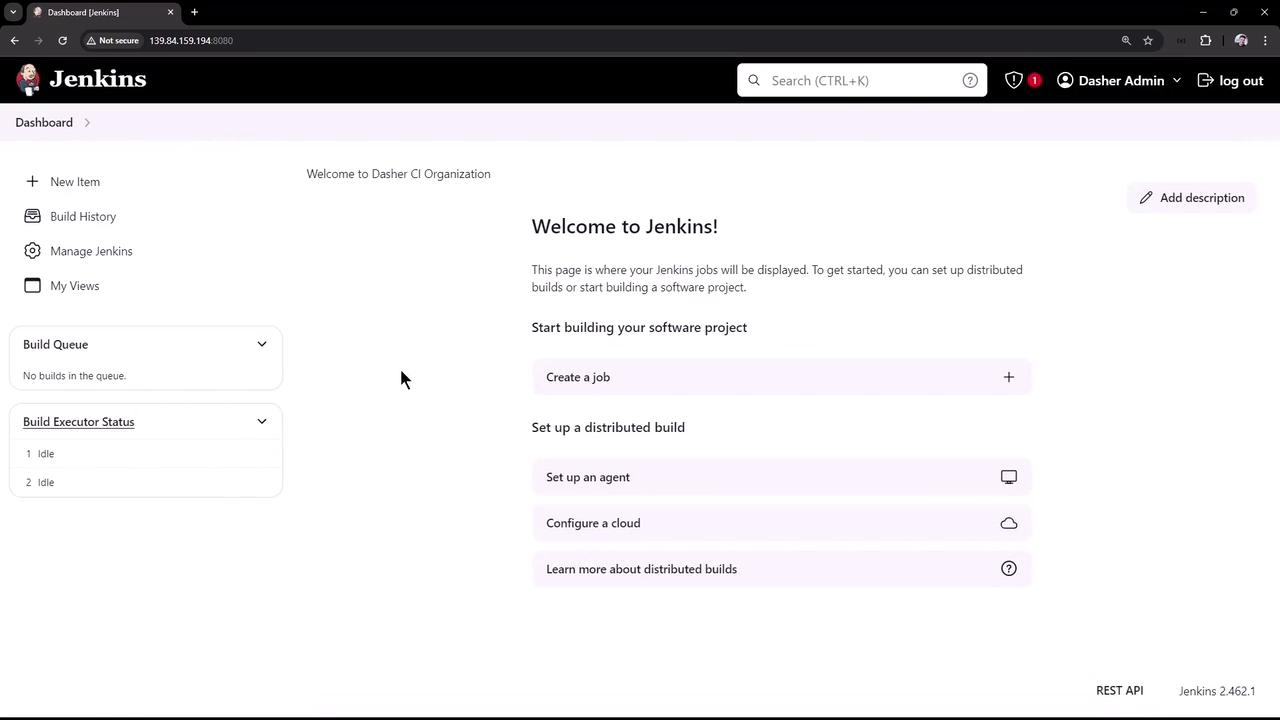
This system message is an effective way to notify users of planned downtime or maintenance, as it appears to every user upon login.
Detailed System Information
Beyond basic configuration, the "Manage Jenkins" section provides access to in-depth system information. Selecting "System Information" displays a comprehensive list of system properties, environment variables, and installed plugins. Note that while you might have manually installed only a few plugins, Jenkins comes pre-installed with many, resulting in more than 50 entries in some cases.
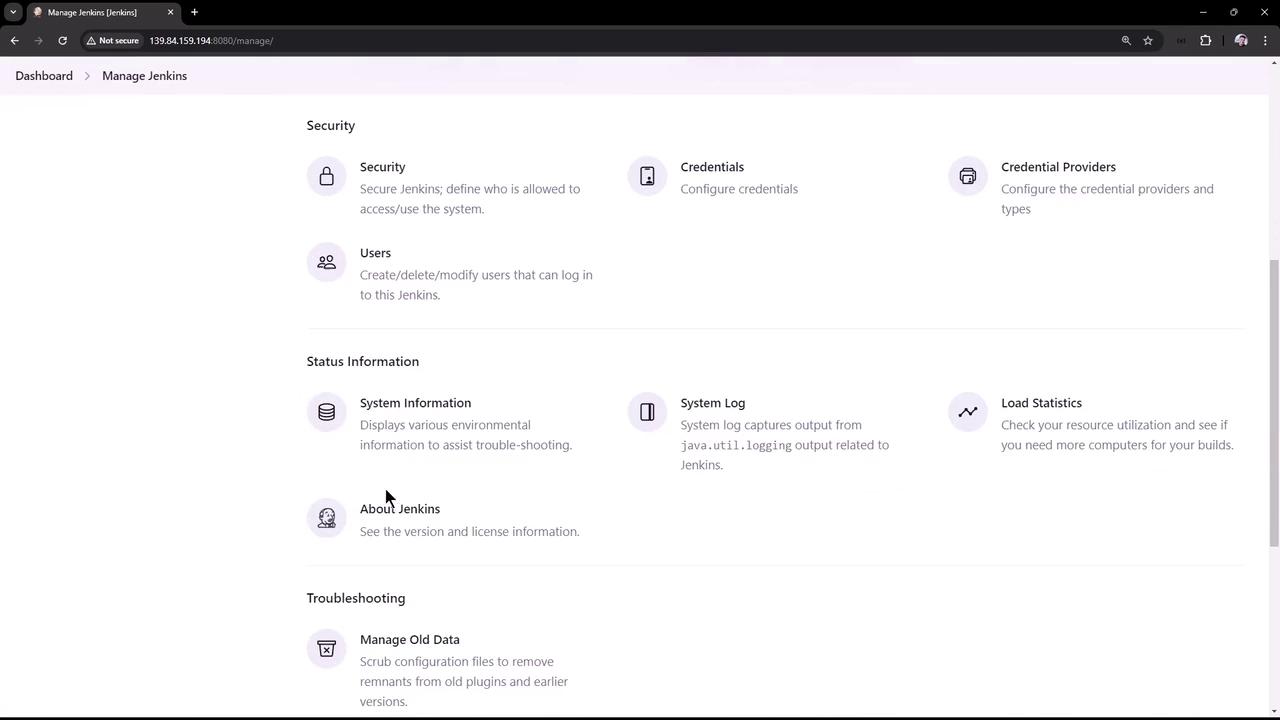
On the System Information page, you can find:
- Environment Variables: All variables accessible to the Jenkins server.
- Plugin Details: A dedicated tab showing plugin names, versions, and statuses.
- System Memory Usage: Visual graphs and thread dumps for troubleshooting performance issues.
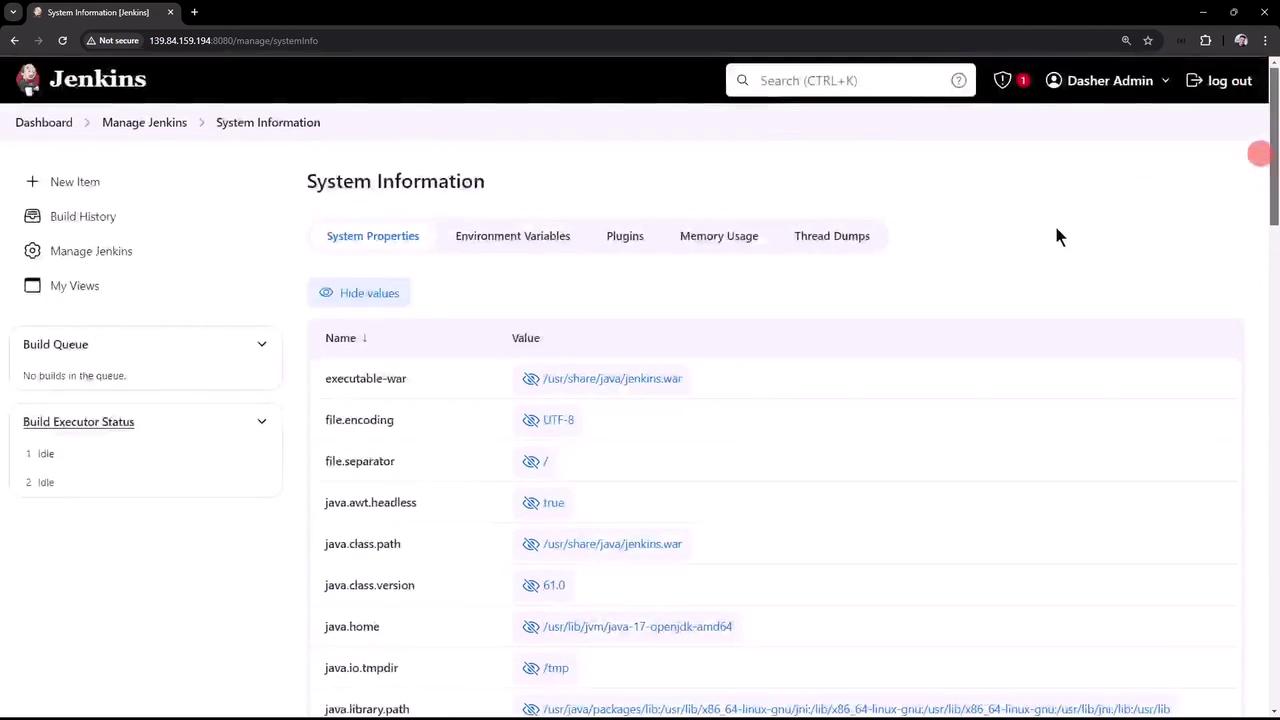
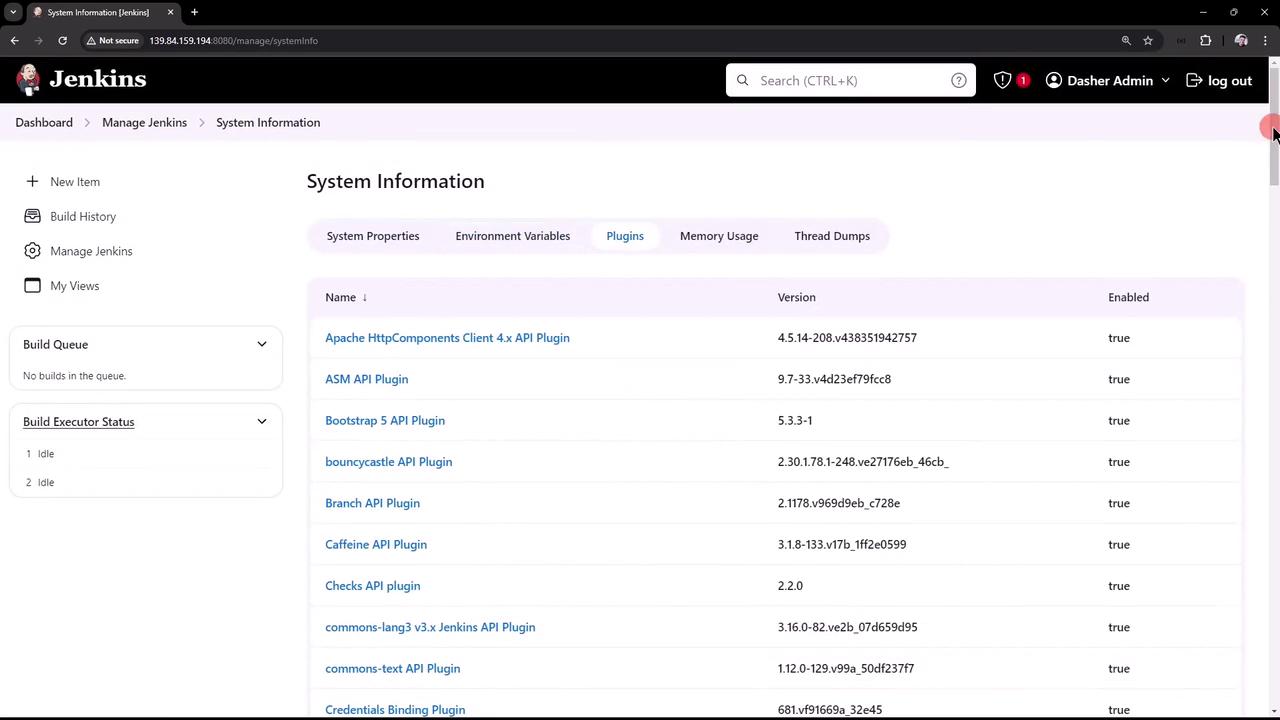

Viewing Logs and Advanced Options
You can also access Jenkins logs directly from the user interface. While tools like journalctl or direct log file inspection on your virtual machine are available, reviewing logs within Jenkins is both convenient and efficient for diagnosing issues.
In upcoming lessons, we'll cover managing plugins—adding, removing, and disabling them—as these options are critical for extending Jenkins' functionality.
Customizing the Jenkins Appearance
This lesson also demonstrates how to customize the Jenkins appearance. In our example, a dark theme plugin is used to switch to a darker interface. This plugin not only changes the theme but also provides options such as displaying pipeline graphs on job and build pages. After enabling and saving these settings, the interface adopts the new dark theme, offering a visually distinct alternative to the default light theme.
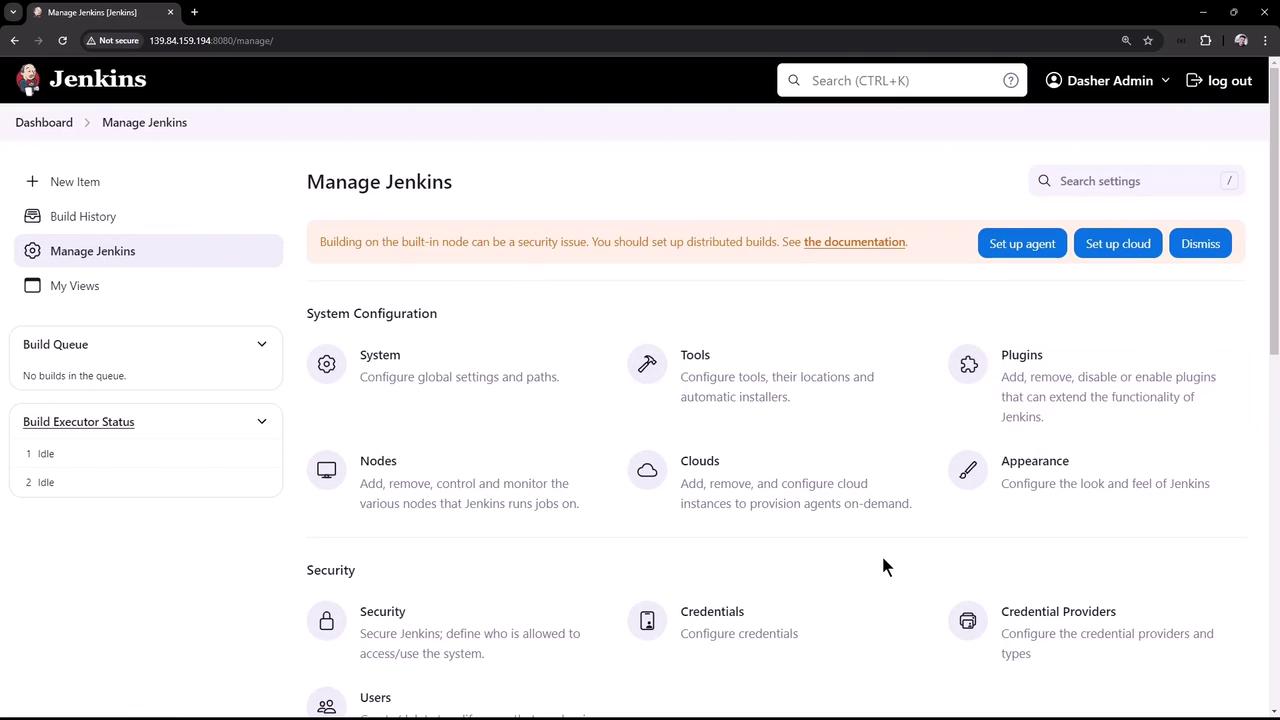
Conclusion
This overview of the Jenkins user interface covers essential features for new and advanced users alike. In future lessons, we will explore more advanced configuration options, detailed plugin management, and additional administrative functions.
Thank you for following along, and happy building with Jenkins!
Watch Video
Watch video content